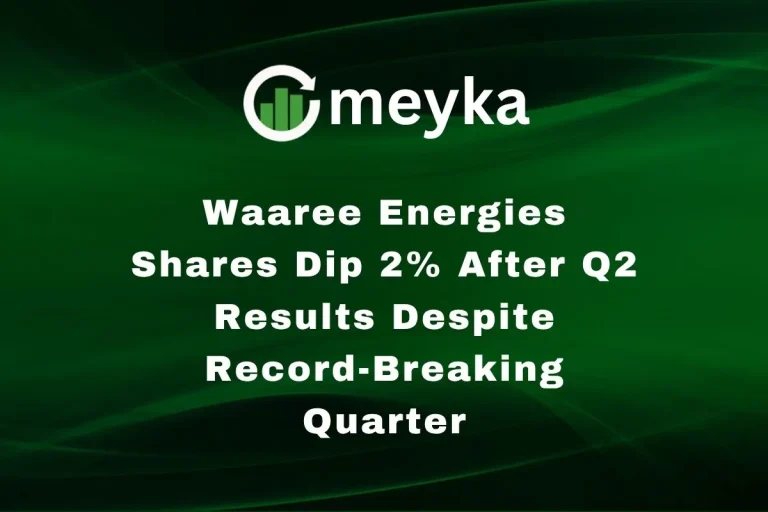Snabbit Valuation Doubles to $180M in 5 Months as India Backs Fast-Growing Startup
We are witnessing a bold leap in India’s home-services startup space. In a short span of just five months, Snabbit’s valuation has reportedly doubled and reached around $180 million, signaling strong investor belief in what it’s building. For a company that only recently launched, this kind of jump is noteworthy. It reflects that the market sees real potential in what Snabbit offers: quick, reliable, tech-enabled home services in India.
What is Snabbit?
Snabbit was founded in 2024 by Aayush Agarwal and is based in India. Their core mission: connect urban households with trained professionals who can deliver cleaning, dish-washing, laundry, kitchen help, and other home chores, typically booked via app and arriving in about 10 minutes.
What stands out:
- They claim a “10-minute” service arrival promise in certain locations.
- They emphasize vetted and trained workers, and a full-stack model (they recruit, train, and manage the workforce).
- They started in Mumbai and have expanded to other metro regions like Bengaluru.
In short, it’s a digitally-native platform aiming to make house-help services as easy as ordering a ride or groceries.
Funding Timeline: From Seed to ~$180 M Valuation
Here is a quick timeline of Snabbit’s major funding/valuation milestones:
- Early in 2025: Raised about $5.5 million in Series A, led by Elevation Capital and Nexus Venture Partners.
- May 2025: Raised $19 million in Series B led by Lightspeed Venture Partners, with participation from Elevation & Nexus.
- After this round, sources estimated a valuation of roughly ₹684 crore (~US $80 million), a ~3.5× jump from the earlier round.
- Recent reports (October 2025) suggest the valuation has now soared to around $180 million, signaling a doubling within ~5 months.
- For example, the company just raised a fresh $30 million round led by Bertelsmann India Investments and is expanding into cooking, elder care, and child care services.
- Also, Snabbit recently moved its headquarters to Bengaluru to further scale operations.
This speed of growth is rare in the Indian consumer internet segment.
India’s Growing Support for Tech Startups
We are seeing a broader trend where India’s tech and consumer internet ecosystem is maturing. Some of the relevant factors:
- Investors are increasingly backing “quick-service” or “on-demand” models (house help, laundry, cleaning) that cater to urban households. For example, Snabbit’s peers are getting attention too.
- The government and regulatory environment is more supportive of home-grown scale-ups; the talent pool (especially tech and operations) is growing in hubs like Bengaluru.
- Rising urban households value convenience, time-saving services, and trusted digital platforms. Snabbit taps directly into this demand.
In short, Snabbit is riding both demand-side tailwinds and supply-side (funding, talent) waves.
Business Model & Revenue Strategy
Here is how we understand Snabbit’s business model:
- Users book services via their app, tasks like cleaning, laundry, dish-washing, etc. The workers come to the home for the booked duration.
- The company uses a full-stack model: they hire or contract the workers, train them, and manage the scheduling/logistics themselves (rather than a pure gig marketplace).
- Pricing: Although detailed pricing is not public, one source indicates an average ticket size of around ~$3 with an acquisition cost of around Rs 700 (~US $8) in the early months.
- They promise very fast arrival (10-minute service in some micro-markets), which adds value for the customer.
- Their stated plan: expand across > 200 micro-markets (small service zones within cities) in the next 9 months.
- Competitive edge: High speed, reliable trained workforce, simplified booking experience.
This model aims to convert what was previously a fragmented and informal market (house help via local contacts) into a digitally managed and scalable service.
What’s Driving Snabbit’s Surge? Key Growth Factors
Why is Snabbit’s valuation rising so fast? A few driving factors:
- Timing & Demand gap: Many urban Indian households lacked a reliable digital alternative for home services; Snabbit spotted this gap and is filling it.
- Speed & convenience: With a promise of “10 minutes” and a one-tap booking process, it taps into modern consumer expectations for instant gratification.
- Strong investor backing: Investors like Lightspeed, Elevati, and Nexus bring credibility, cap, and ecosystem support.
- Scalable micro-markets model: By focusing on dense urban clusters and micro-markets, Snabbit can scale efficiently rather than trying to cover whole cities from day one.
- Expansion into adjacent categories: As noted recently, Snabbit plans to move into cooking, eleldercareand child care services, which expands potential revenue and use cases.
- India ecosystem momentum: The Indian startup funding climate, especially for consumer services, remains vibrant, helping valuations rise quickly.
Comparisons With Other Fast-Growth Indian Startups
To make sense of Snabbit’s journey, we compare it with peers:
- Urban Company (formerly UrbanClap) is a major player in the home-services space and recently filed its IPO documents (for ~₹1,900 crore). Snabbit is positioning itself to compete in a similar category.
- Other 10-minute service startups, such as Pronto (househelpl, p,), have much lower valuations (~US $12.5 million) but suggest the segment is gaining investor interest.
- The speed of Snabbit’s valuation rise (~3.5× in under a year, potentially ~2× in 5 months) is ahead of many peers, which may take longer to scale.
This suggests that Snabbit could be on a path to becoming a significant “unicorn-in-waiting” if it executes well.
Road Ahead: Expansion Plans & Future Outlook
What will we watch next for Snabbit?
- Geographic expansion: The target of 200+ micro-markets in India is ambitious and will test their operational scalability.
- Service category expansion: Cooking, elder, and child care are the next verticals mentioned; this could increase average revenue per user.
- Unit economics & profitability: As the business grows, we’ll watch if they can improve margins, reduce worker acquisition/training costs, and maintain speed and quality.
- Valuation and next funding rounds: If the valuation claims around $180 M hold, the next round may push them closer to unicorn territory (~ US$1 B) eventually.
- Competition and market consolidation: They will face stiff competition and will need to defend speed, quality, worker satisfaction, and unit economics.
We from the market will be watching whether Snabbit’s rapid growth is sustainable and whether they can scale responsibly.
Challenges & Risks
Even as the story is bright, some risks deserve attention:
- High burns and operational costs: Quick-service models often have high logistics, workforce training, and retention costs. If scale doesn’t bring enough margin improvement, profitability may be delayed.
- Competition pressure: Established players and new entrants could undercut pricing or expand similar fast-service models.
- Execution risk: Scaling to 200 + micro-markets successfully is non-trivial. Maintaining quality, worker safety, and customer satisfaction across geographies is a challenge.
- Valuation risk: Rapid valuation increases can lead to higher expectations; if growth slows, investor sentiment could shift.
We must keep in mind these caveats even while we observe the strong momentum.
Conclusion
Snabbit’s journey from a launch in 2024 to a reported valuation of US$1800 million in five months is a striking example of how fast India’s startup ecosystem can move. We see that the combination of strong demand, digital convenience, investor backing, and a scalable platform has aligned in their favor. For Indian households, Snabbit represents a new way to solve old problems, house-help services with speed, trust, and tech behind them. For investors and the startup ecosystem, it signals that the home-services category is no longer fragmented and informal; it is becoming digitized and investible. As we follow Snabbit’s next moves, geographic expansion, service diversification, and unit economics improvement, the next 12 months could be pivotal. If they continue executing, we might just be looking at the rise of one of India’s next major consumer-internet success stories. And if we’re right, the “$180 M” milestone may soon feel modest.
FAQS:
We don’t have proof that Snabbit is profitable yet. As of March 2024, it reported revenue of about ₹1.92 lakh while still investing heavily in growth.
Snabbit was founded by Aayush Agarwal in 2024, and he serves as CEO.
Snabbit has grown quickly. It raised major funding rounds ($19 million in May 2025) and expanded into many micro-markets in India to offer on-demand home services.
Disclaimer:
The content shared by Meyka AI PTY LTD is solely for research and informational purposes. Meyka is not a financial advisory service, and the information provided should not be considered investment or trading advice.





